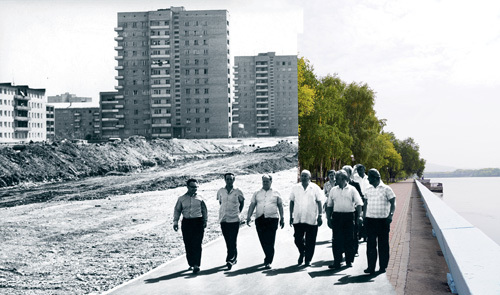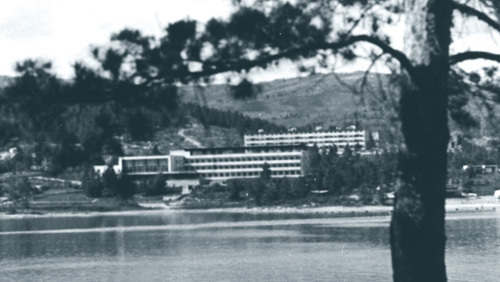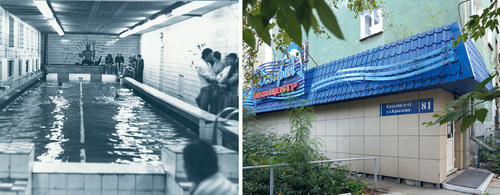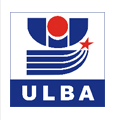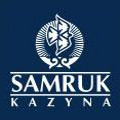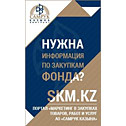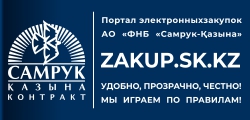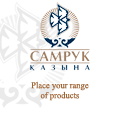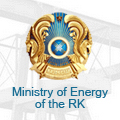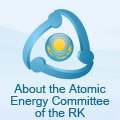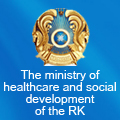The plant and the city
The 300th anniversary of Ust-Kamenogorsk is a long-awaited holiday for all citizens. Today our modern, beautiful, green city is an example of a large industrial center. The Ulba Metallurgical Plant also contributed to the development of Ust-Kamenogorsk.
Do you remember how it all started?!
«It's hard for you to imagine what Ust-Kamenogorsk was like. No production! In muddy roads you could not cross the street if you do not hold your boots tightly with your hands. Raise your leg and your boot is still in the mud «, – this is how Efim Pavlovich Slavsky spoke about our city.
It was with his light master's hand that residential areas, schools and gardens were built, houses of culture and hospitals were raised, industrial enterprises were transformed.
The construction of the facilities was carried out by the Irtysh Construction Department (IUS). It, like UMP, was subordinate to the Ministry of Medium Machine Building, which was headed by Efim Pavlovich. Many objects of Ust-Kamenogorsk, which Slavsky loved in a fatherly way, were built by IUS by order of the plant.
In 1957-1991, the Irtysh Construction Department built:
– residential buildings with more than 20,000 apartments;
– nine hospitals and hospital complexes;
– 14 schools and three colleges;
– two hostels;
– 35 kindergartens;
– three camps for work and rest;
– Central House of Culture, Sports Palace, House of Young Technician, House of Pioneers, music school;
– eight houses of culture in the regional centers of the East Kazakhstan region;
– 27 shops, 17 cafes, canteens, restaurants;
– rest house «Blue Bay»;
– a complex for providing drinking water to the city of Ust-Kamenogorsk and technical water at the UK CHPP;
– nine bridges, transport interchanges and viaducts;
– 26 hectares of greenhouses and seven livestock complexes.
Strelka
In the 70s, construction began on one of the most beautiful micro-districts of Ust-Kamenogorsk – the Irtysh embankment. The city's visiting card, Strelka, has been under construction for 14 years.
«And this whole beautiful embankment today, it was a dump, there was no fence to the Irtysh. I said: let's build a district here. It's a great place today! The embankment was made by analogy with the Leningrad one,» – this is how Efim Pavlovich told about the current Strelka. Now this embankment, which he conceived, bears his name at the request of the UMP staff.
There is also another interesting story.
«Do you know what kind of toadstool Strelka used to be? Clouds of mosquitoes, midges, mud, sections of the old river bed, a fish factory, baths. Horror! The surveyors and I spent six months exploring this area in rubber boots. Almost two million cubic meters of soil were poured there in order to level everything. It was a difficult job,» recalled Vladimir Plokhikh, an honored builder of the Kazakh SSR, who headed the IUS for 15 years.
Former chief engineer of the IUS Boris Shakirovich Nazyrov, explains that it was on Strelka that houses were mainly built for factory workers. Housing stock for 10 thousand people was built. To «set» the area, the Ulba and Irtysh stream was «laced» with a pick-up wall, then the soil was filled up.
– The last house that we (IUS) built is also located on the Strelka. This is a house «on legs», or rather – on stilts, at the address – Slavsky, 40. It was already 1991-1992. The first two floors are not residential there, because there is a park in front of the house, but also because people should be able to see the Irtysh, – says Boris Shakirovich.
Boris Alexandrov Sports Palace
The Sports Palace was built from 1964 to 1968. Its official opening took place at the end of 68th.
Svetlana Mordvinova told the story of the construction of the Sports Palace:
– The need for the Sports Palace was associated with the successes of the Torpedo hockey team: ice was needed. But the problem was that such sports facilities were allowed to be built in million-plus cities. And only thanks to the participation of the former Minister of Sredmash Efim Slavsky, in January 1969, such a structure was opened in Ust-Kamenogorsk.
Journalist Anatoly Shevchenko presents the history of the creation and opening of the Sports Palace no less interesting in his book «Puck-oo-oo-oo!!!»
«In the early sixties, defense Sredmash (represented by UMP) took up the design and then the construction of the Sports Palace. At that time, it was a stunningly beautiful and rather large sports complex. Now it may seem that on the banks of the Ulba, a silvery building with two «ice» arose quickly and without any difficulties. But hardly anyone remembers Nikita Sergeyevich Khrushchev's formidable order to ban the construction of sports and cultural facilities throughout the country, violation of which threatened to «lose his head». So, on the initiative of true hockey fans, the efforts of the plant administration and the city authorities successfully ended with the opening of the Sports Palace in 1969. By this time, the first, essentially professional, hockey team had already been formed. Two dozen hockey players and coaches were paid... as workers at UMP. The same famous Torpedo coach Yuri Baulin, who came to the team as a playing mentor, for example, was forced to write an application for a job at the plant as an apparatchik. And other hockey players were listed as metallurgists, and then as sports instructors in various departments of the enterprise. The attendants of the Sports Palace were financed through the plant's housing and communal administration. So the construction and 30-year maintenance of hundreds and thousands of athletes fell entirely on the shoulders of UMP.»
Central House of Culture (CHC)
The CHC was built in 1962 for the UMP staff. It was to become one of the many factory clubs: cozy, comfortable, nothing more. As planned, it was planned to accommodate only 400 people. However, later the authorities changed their minds and decided to build not a modest House of Culture, but a real palace.
In 1959, the monumental building in the Greek style was finished, all that remained was to put some polish. Nobody expected further. The Soviet government issued a decree – to build without frills. The object was not presented in time, in all respects it did not fit into the new standards. As a result, the CHC... began to build anew. The columns were demolished, the foyer was expanded. The House of Culture was now designed in a strict style and already accommodated 1,000 visitors.
Soon there began to work clubs of interest, a library for adults and children. After that, the House of Culture began to decorate, they did it without stint. The famous Georgian master made two wool tapestries, each weighing 600 kg. One was presented to the Italian theater, the second was presented to the Central House of Culture.
In 1957, the famous Soviet sculptor Yevgeny Vuchetich sculpted the sculpture «Let's beat swords into plowshares». The composition of the USSR was presented to the UN. The international organization appreciated the author's skill, and the sculpture was installed at the UN headquarters. Vuchetich made three more copies of his work. One went to Moscow, the other to Volgograd, the third to Ust-Kamenogorsk, and it still stands at the entrance to the Central House of Culture.
In 1962, the sculptor made another gift to our city – the composition «To the Stars», also installed near the Central House of Culture.
Blue Bay. Borok. Sibiny.
Factory workers, like any working people, love to have a good rest, especially in summer. Bukhtarma Reservoir, Sibinsky Lakes, Gornaya Ulbinka... It is no coincidence that in these picturesque places of the UMP, in the middle of the last century, the Blue Bay rest house, the Borok and Sibiny bases were built, and for children – the A. Matrosov pioneer camp.
The first coast of the Bukhtarma reservoir was mastered by factory tourism lovers. In the early 60s there was a tent city. Fresh air, amazing nature attracted and beckoned. And when the decision was made about where to be the factory rest house, the management of UMP had no doubts.
The construction was carried out at a record pace. Materials were delivered both by land and by water. The first phase of the holiday home was commissioned in 1966. In two years, a treatment plant, a boiler house and a multi-storey building, which housed a canteen and a club, appeared on the once deserted place.
In one season, Blue Bay hosted up to 300 people. In addition to factory workers, workers from related enterprises from Novosibirsk and Tomsk came here. The rest house worked all year round. In summer, beach lovers gathered here, and in winter – those wishing to go skiing.
In order to expand the opportunities for recreation of the employees of the enterprise, two factory bases were built in the 70s. On the Bukhtarma reservoir – «Borok», on one of the Sibiny lakes – «Sibiny». It is interesting that the recreation center «Sibiny» began with a sports camp organized for factory diving enthusiasts.
Swimming pool «Dolphin»
In 1965 the plant completed the construction of the first swimming pool in the city, which received the symbolic name «Dolphin». Its peculiarity lies in the fact that it is located in the basement of a residential building and was the first building of this type in Kazakhstan.
UMP employees also actively visited the pool. Among them was Nadezhda Turukalo, already at that time fond of scuba diving. Soon, sports activities for Nadezhda became more than a hobby and reached a professional level. Already in 1969, at the USSR championship in high-speed underwater sports, she set her first world (!) record, for which other victories at the European and world championships will come in the future.
Of course, not all swimmers have shown such brilliant results. And this is not the main thing. The main thing is that the residents of the city have an excellent opportunity to improve their health all year round.
Housing and industry
– The first houses for UMP employees were built along Metallurgov Street, Lenin Avenue (now Nazarbayev), Kirov (now Chekhov). That is IUS erected first monolithic house down the Bespalov street, one entrance – for UFG (Murin), a second entrance – LZC (Kulenova). This house is still standing, it is 10-storey in the depth, where Gagarin Boulevard, and behind it garages. It was the beginning of the 90s. But we (IUS) had a limited workforce, there were not enough finishers, and then we set up boxes, as they say, «dummy houses». And these houses were distributed by subdivisions, and the factory workers were already doing the finishing themselves, – says Boris Nazyrov.
– I came to work at UMP in 1963. I remember that Proletarskaya Street (now – Kabanbai Batyr) was then almost completely built. There was already a House of Communications, the Central House of Culture, – recalls Svetlana Mordvinova. – At the same time, the streets of Krylov, Krasnooktyabrskaya (now – Auezov Avenue), the Krasnyh Orlov embankment (now – A. Protozanov Street) were being built.
By the way, on the last two streets for the first time began to build Khrushchevs. They were supposed to speed up the resettlement of people. This was in the late 60s – early 70s. The first apartments with an improved layout appeared in 1972 in the same place, on Auezov Avenue.
The city was built up quickly. Almost at Stakhanov's pace. UMP workers received keys and became happy new settlers.
– At that time, thousands and hundreds of thousands of square meters of housing were being commissioned, – explains Svetlana Mordvinova. – Apartments were distributed not only among the employees of the plant. Housing was also allocated to those whose houses were demolished during construction.
By the way, the first nine-story building in the city, erected at 1 Dzerzhinsky Street, is also the work of UMP. This was a landmark event. The first elevator in the city appeared. A good half of the city kids came running here specially to ride.
And also in Ust-Kamenogorsk IUS built five factories – UMP (partially), a ceramics plant, a reinforcement plant, including a polymer one and a factory of normalized fasteners in Sogra.
Here and now
Social and cultural facilities built more than half a century ago have become an integral part of the «landscape» of the regional center. But, if not for the active participation in the fate of these projects of the former Minister of Sredmash Efim Slavsky and the director of UMP Vladimir Potanin, they would hardly have taken place. Say what you like, but the role of the Ulba Metallurgical Plant in the history of the formation and development of modern Ust-Kamenogorsk is enormous.
